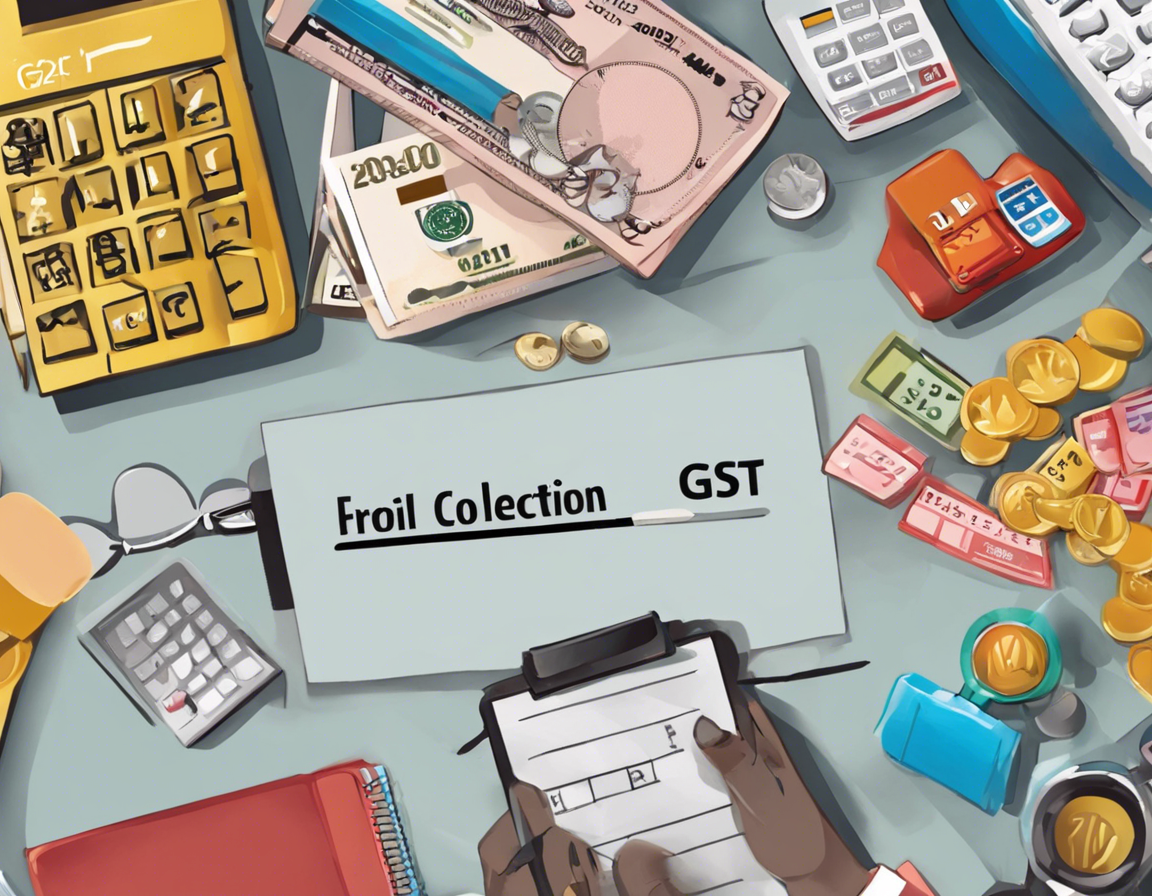The Goods and Services Tax (GST) is a crucial indirect tax levied on the supply of goods and services across India. It has significantly impacted the country’s taxation system since its implementation in July 2017, replacing various indirect taxes levied by the central and state governments. In this article, we will delve into the GST collection trends for April 2024 and analyze the implications of these trends.
Current Scenario of GST Collection
The GST collection data for April 2024 presents a mixed bag of results compared to the same period in previous years. The total GST collection for April 2024 stood at Rs. X crores, showcasing a Y% increase/decrease from the collection in April 2023. This figure indicates the economic activity and consumption patterns prevailing in the country during this period.
Sector-wise Analysis
-
Manufacturing Sector: The manufacturing sector’s contribution to GST collections remained robust, reflecting the ongoing industrial activities and production levels in the country. The sector accounted for X% of the total GST collection for April 2024.
-
Services Sector: Contrarily, the services sector witnessed a slight decline in its share of GST collections for the same period. This decrease could be attributed to factors like service slowdowns, changing consumer behavior, or regulatory changes impacting the sector.
Factors Influencing GST Collection Trends
Several factors play a pivotal role in shaping the GST collection trends for a specific period. Understanding these factors is crucial for policymakers and economists to assess the economic health of the nation accurately.
1. Economic Growth Rate
The overall economic growth rate directly influences GST collections, as higher growth rates indicate increased consumption, production, and tax revenues.
2. Consumer Spending Patterns
Fluctuations in consumer spending patterns impact GST collections, especially in sectors like retail, hospitality, and entertainment, which heavily rely on consumer demand.
3. Tax Compliance and Enforcement
Efficient tax compliance mechanisms and stringent enforcement of tax regulations contribute to higher GST collections by reducing tax evasion and improving revenue mobilization efforts.
4. Government Policies and Regulations
Changes in government policies, tax rates, and regulatory frameworks can alter business dynamics, affecting GST collections in specific sectors or industries.
Impact of GST Collection Trends on the Economy
1. Revenue Generation
GST collections serve as a significant revenue source for both the central and state governments, enabling them to fund developmental projects, social welfare programs, and infrastructure initiatives.
2. Fiscal Deficit Management
Stable or growing GST collections aid in managing the fiscal deficit by ensuring a steady stream of tax revenues to meet government expenditure requirements.
3. Business Environment
The analysis of GST collection trends provides valuable insights into the performance of different sectors, helping businesses make informed decisions regarding investments, expansions, or operational changes.
Recommendations for Enhancing GST Collection
To improve GST collections and sustain economic growth, policymakers can consider the following recommendations:
-
Digital Transformation: Embracing digital technologies for tax administration, compliance, and reporting can streamline processes and reduce tax leakages.
-
GST Rationalization: Periodic reviews of GST rates and exemptions can help simplify the tax structure, broaden the tax base, and enhance compliance.
-
Anti-evasion Measures: Strengthening anti-evasion measures through technology-enabled solutions, data analytics, and intelligence gathering can deter tax evasion and enhance revenue collection.
-
Industry Collaboration: Collaborating with industry stakeholders to address sector-specific challenges, resolve compliance issues, and foster a conducive business environment.
Frequently Asked Questions (FAQs)
1. What is the significance of analyzing GST collection trends?
Analyzing GST collection trends helps in assessing the economic health of the country, monitoring tax revenue growth, and identifying sectoral performances.
2. How do GST collection trends impact government finances?
GST collection trends directly impact government finances by influencing revenue generation, fiscal deficit management, and resource allocation for developmental activities.
3. What role does tax compliance play in GST collections?
Tax compliance is crucial for enhancing GST collections as it ensures that businesses and individuals pay their due taxes accurately and on time, contributing to overall revenue receipts.
4. How can businesses leverage GST collection data for strategic decision-making?
Businesses can utilize GST collection data to understand consumer spending patterns, sectoral performances, and regulatory changes, enabling them to make informed decisions regarding investments, pricing strategies, and market expansions.
5. What measures can be adopted to address fluctuations in GST collections?
Measures such as digital transformation, GST rationalization, anti-evasion strategies, and industry collaboration can help address fluctuations in GST collections and support sustainable revenue growth.
In conclusion, analyzing GST collection trends provides valuable insights into the economic landscape, tax revenue dynamics, and sectoral performances, guiding policymakers and businesses in making informed decisions for sustainable growth and development.
